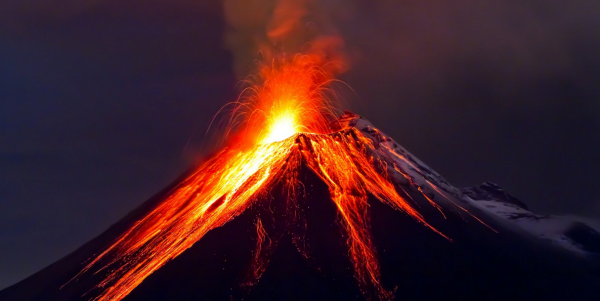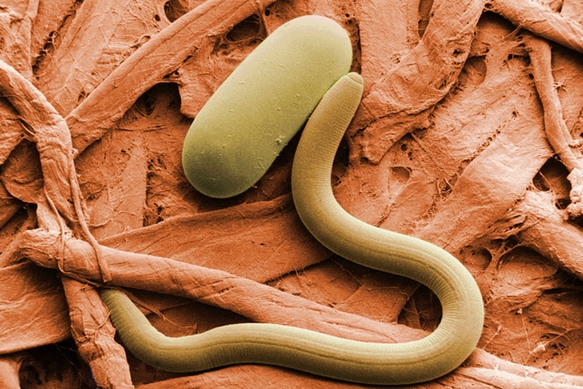Vesuvius eruption wiped out people of Pompeii because it lasted longer than 15 minutes, study finds
By virgiliomarin // 2021-10-01
Tweet
Share
Copy

A new study suggests that the eruption of Mount Vesuvius two millennia ago may have killed the inhabitants of the ancient city of Pompeii because it lasted longer than 15 minutes. The majority of the victims died of asphyxiation, or suffocation, caused by a giant cloud of ash and toxic gases.
In a study published in the journal Scientific Reports, researchers said that the residents would have survived if the pyroclastic flow – a dense, fast-moving flow of solidified lava pieces, volcanic ash and hot gases – that was unleashed by Vesuvius lasted for only a few minutes. But the gases and ash from the pyroclastic flow engulfed the city for nearly 20 minutes.
Duration of pyroclastic flow is key to surviving an eruption
Over just two days, the eruption of Vesuvius in A.D. 79 generated more than 100,000 times the thermal energy created during the 1945 nuclear bombings of Hiroshima and Nagasaki. The deadly eruption buried Pompeii, a once-thriving city of 20,000 people, as well as the nearby towns of Oplontis, Stabiae and Herculaneum under ash, mud and rock fragments. It has been estimated that at least 2,000 Pompeii residents lost their lives due to the eruption. Some were killed by the rain of volcanic rocks while others were trampled by the panicked throng of people rushing to get out of the city. Most choked to death due to the pyroclastic flow, which created a giant, toxic cloud that was more dangerous than lava. This was because such clouds travel faster and reach temperatures of up to 1,800 degrees. Past studies suggested that the eruption's first pyroclastic surges likely made the six-mile trek from Vesuvius to Pompeii in a matter of a few minutes. For their study, researchers from Italy's University of Bari Aldo Moro and the National Institute of Geophysics and Volcanology (INGV), as well as researchers from the British Geological Survey, developed a computer model of the eruption to quantify the effect of the pyroclastic flow on Pompeii residents. While survival was virtually impossible at Herculaneum, which was located near the foot of the volcano, the model showed that inhabitants of Pompeii could have survived if the pyroclastic flow lasted for just a few minutes. But the cloud covered the city for around 17 minutes, which was long enough to kill anyone who breathed the air. As such, most of those who died likely suffocated in their homes and beds or on the streets and squares of the ancient Roman city. "Those 15 minutes inside that infernal cloud must have been interminable," Roberto Isaia, a senior researcher at the INGV's Vesuvius Observatory, told the Guardian. "The inhabitants could not have imagined what was happening. The Pompeians lived with earthquakes, but not with eruptions, so they were taken by surprise and swept away by that incandescent cloud of ash." (Related: Volcanic eruption triggered worst mass extinction in Earth's history – study.) The researchers said that pyroclastic flows are the most devastating product of explosive eruptions. They noted that these scorching rivers of mud, lava and ash are generated by the collapse of the eruptive column inside a volcano. This results in volcanic ashes running along a volcano's slopes at speeds of hundreds of miles per hour, at high temperatures and with a high concentration of particles. The researchers concluded that the duration of the pyroclastic flow is key for survival in areas that are relatively farther away from an erupting volcano, as the temperature and strength of the current are diminished. "It is very important to be able to reconstruct what happened during Vesuvius’s past eruptions, starting from the geological record, in order to trace the characteristics of the pyroclastic currents and the impact on population," said Pierfrancesco Dellino, a professor of volcanology and the lead researcher of the study. Vesuvius remains active to this day. It has blown off its lid several times since its devastating eruption that obliterated Pompeii, with the last one being in 1944. Today, more than two million people live around the volcano and on its lower slopes. Visit Disaster.news to learn more about volcanic eruptions and other natural disasters. Sources include:Tweet
Share
Copy
Tagged Under:
extinction environment research natural disasters discoveries ancient history Mount Vesuvius geology volcanic eruptions badscience real history Pompeii asphyxiation pyroclastic flows
You Might Also Like
CDC, FDA both fudged covid numbers to push more plandemic tyranny
By Ethan Huff // Share
Doctors, hospitals are now refusing to treat unvaccinated patients
By Mary Villareal // Share
Johns Hopkins data PROVES distribution of COVID-19 vaccines led to spikes in infections and deaths
By Arsenio Toledo // Share
Personalized nutrition: Researchers identify connection between genetic variation and gut bacteria
By Virgilio Marin // Share
Recent News
EPA plans to regulate phthalates over worker and environmental health risks
By lauraharris // Share
TikTok parent ByteDance goes all in with $14B Nvidia chip SPLURGE
By kevinhughes // Share
The Sacred Root: The untold power of iboga to heal trauma and addiction
By kevinhughes // Share











